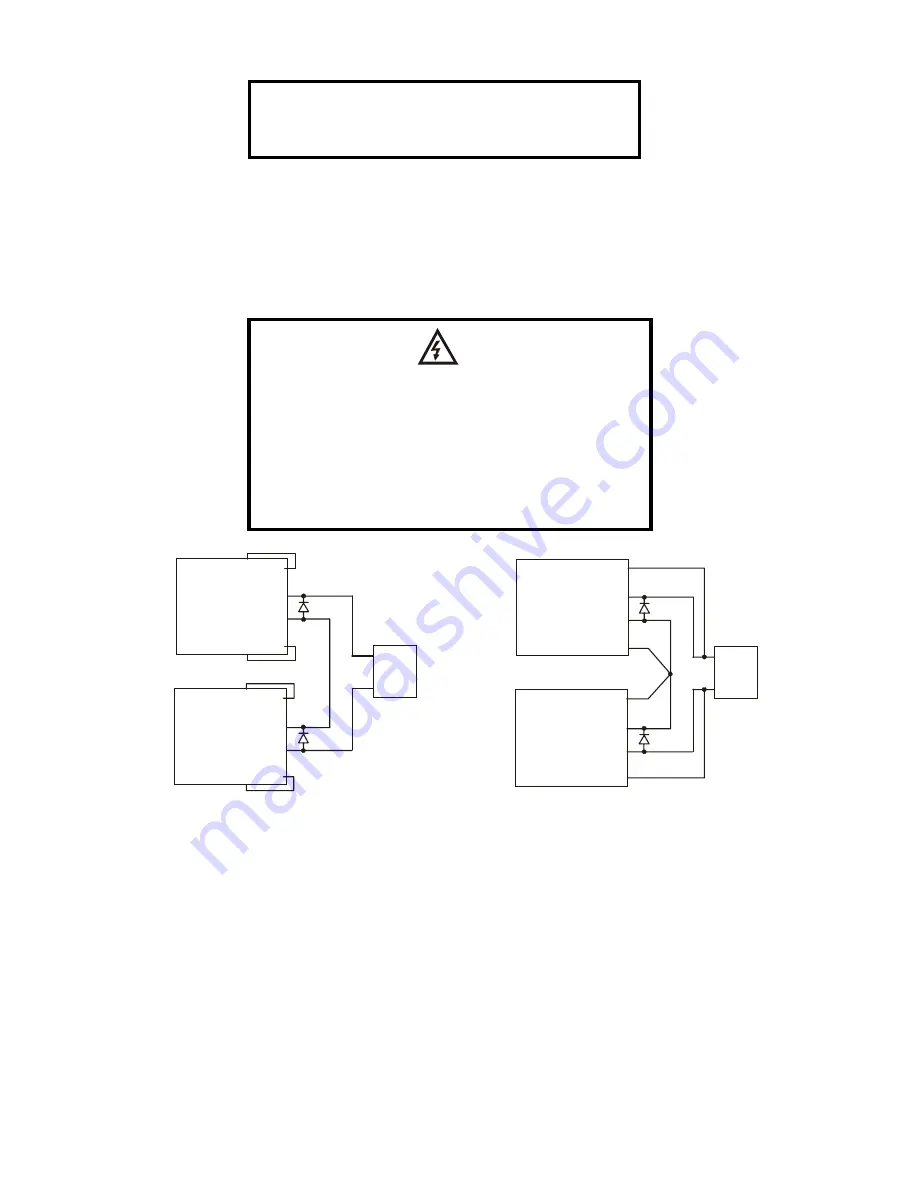
83-507-013 Rev. A
39
+S
+
-
-S
-LS
+LS
POWER
SUPPLY
+S
+
+
-
-
-S
-LS
+LS
POWER
SUPPLY
LOAD
+S
+
-
-S
-LS
+LS
POWER
SUPPLY
+S
+
+
-
-
-S
-LS
+LS
POWER
SUPPLY
LOAD
Fig.5-1: Series connection, local sensing
Fig.5-2: Series connection, remote sensing
(*)
(*)
(*)
(*)
(*) Diodes are
user supplied.
5.14.1 Series connection for increased output voltage
In this mode, two units are connected so that their outputs are summed. Set the Current of each power
supply to the maximum that the load can handle without damage. It is recommended that diodes be con-
nected in parallel with each unit output to prevent reverse voltage during start up sequence or in case
one unit shuts down. Each diode should be rated to at least the power supply rated Output Voltage and
Output Current. Refer to Fig.5-1 and 5-2 for series operation with local and remote sensing.
Remote
programming in series operation for increased output voltage:
1. Programming by external voltage:
The analog programming circuits of this power supply are
referenced to the negative output potential. Therefore, the
circuits used to control each series connected unit must be
separated and floated from each other.
2.Using the SO function and PS_OK signal: The Shut-Off and PS_OK circuits are referenced to the iso-
lated interface common, IF_COM (J1-2,3). The IF_COM
terminals of different units can be connected to obtain a
single control circuit for the power supplies connected in
series.
CAUTION
Do not connected power supplies from different
manufacturers in series or in parallel.
WARNING
When power supplies are connected in series, and
the load or one of the output terminals is grounded,
no point may be at a greater potential of +/-60VDC
from ground for models up to 60VDC Rated Output
and +/-600VDC from ground for models >60VDC
Rated Output. When using RS232/RS485 or IEEE,
refer to the OUTPUT TERMINALS GROUNDING
warning in Section 3.9.11.
















































